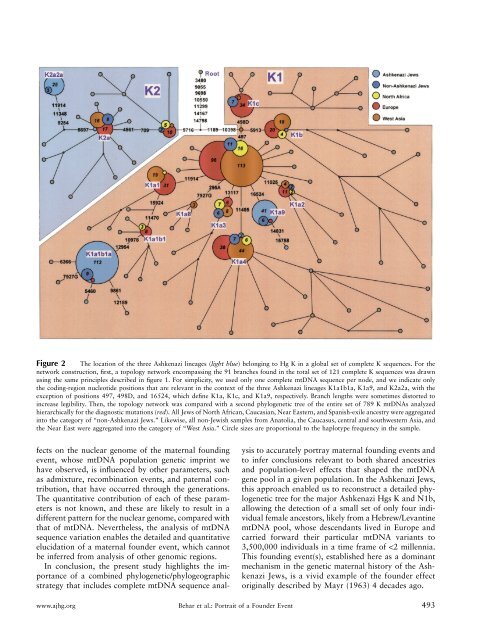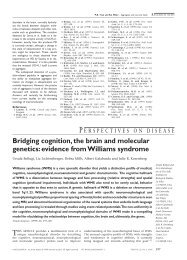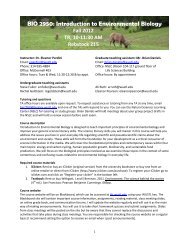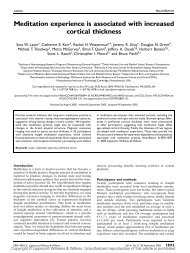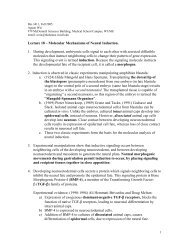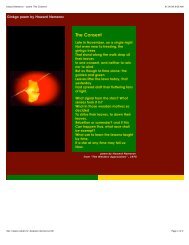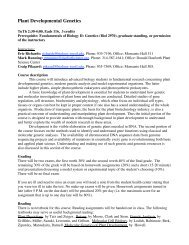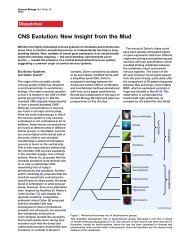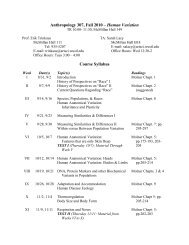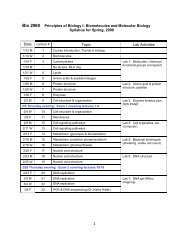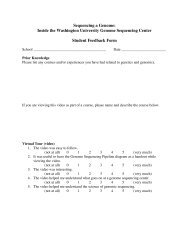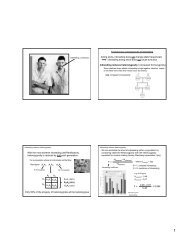Table 6SubHg Affiliation <strong>of</strong> the 789 mtDNAs Belonging to K<strong>The</strong> table is available in its entirety in the onlineedition <strong>of</strong> <strong>The</strong> American Journal <strong>of</strong> Human Genetics.kenazi mtDNA genomes with the rCRS sequence motifin their HVS-I region, as demonstrated for Hg K andN1b in the current study, would be a straightforwardapproach to reveal additional maternal founder lineagesamong such mtDNAs.<strong>The</strong> coalescence time for each <strong>of</strong> the four lineages wascalculated independently in two ways: from HVS-I andfrom the entire coding-region sequence (table 8). Whenwe analyzed the coding-region data, we used only theinformation obtained from the novel complete mtDNAgenomes in which <strong>Ashkenazi</strong> ancestry was firmly established(table 1). Historical records suggest the establishment<strong>of</strong> the <strong>Ashkenazi</strong> population during the 7th and8th centuries in the Rhine valley by a few migratingfamilies arriving from northern Italy (Ostrer 2001). <strong>The</strong>estimated number <strong>of</strong> <strong>Ashkenazi</strong> Jews in the 12th and13th centuries is 25,000, a number sufficient to keepallelic frequencies largely in balance against random geneticdrift within ∼30–40 generations. <strong>The</strong>refore, thedemographic history suggests that the crucial founderevents are likely to have occurred sometime before the12th century, whereas the expansion phase <strong>of</strong> <strong>Ashkenazi</strong><strong>Jewry</strong> in Europe, with its ups and downs, has lasted morethan a millennium. Our coalescence analysis is in agreementwith this assumption, since the expansion timecalculations for the four <strong>Ashkenazi</strong> lineages point to thepast 20 centuries and are close to the historical foundingperiod <strong>of</strong> the <strong>Ashkenazi</strong> population. It should be notedthat, despite relatively large SDs, the coalescence timeestimates for the four maternal founder <strong>Ashkenazi</strong> lineagesare at least an order <strong>of</strong> magnitude lower than thoseobtained for the corresponding parental clades, whichclearly signals a recent beginning <strong>of</strong> their expansion.<strong>The</strong>re are two fundamental questions with respect tothe geographic origin <strong>of</strong> the <strong>Ashkenazi</strong> founding lineages.First, were these lineages a part <strong>of</strong> the mtDNApool <strong>of</strong> a population ancestral to <strong>Ashkenazi</strong> Jews in theNear East, or were they established within the <strong>Ashkenazi</strong>Jews later in Europe, as a result <strong>of</strong> introgression fromEuropean or Eurasian groups? Second, where did theselineages expand? <strong>The</strong> observed global pattern <strong>of</strong> distributionrenders very unlikely the possibility that the fouraforementioned founder lineages entered the <strong>Ashkenazi</strong>mtDNA pool via gene flow from a European host population.For example, in databases <strong>of</strong> HVS-I sequences<strong>of</strong> British, Irish, German, French, or Italian subjects,these <strong>Ashkenazi</strong> sample founder lineage sequences werenot observed (Baasner et al. 1998; Lutz et al. 1998;Pfeiffer et al. 2001). Furthermore, the non-<strong>Ashkenazi</strong>Jewish populations sharing the <strong>Ashkenazi</strong> mtDNA HgK lineages turn out to be from Jewish communities thattrace their origins to the expulsion from Spain in 1492.Either a shared ancestral origin <strong>of</strong> the two groups or,alternatively, a postexile admixture between neighboring<strong>Ashkenazi</strong> and Spanish-exile Jewish populations may explainthe sharing <strong>of</strong> these maternal lineages. However,the very presence <strong>of</strong> the <strong>Ashkenazi</strong> founding lineages,albeit at low frequencies, in North African, Near Eastern,and Caucasian Jews, supports a common Levantineancestry. <strong>The</strong> maternal subclade from which the <strong>Ashkenazi</strong>mtDNA lineage K2a2a arose was not found inany other <strong>of</strong> the populations reported herein (table 6).<strong>The</strong> <strong>Ashkenazi</strong> K1a9 and K1a1b1a lineages were notfound in non-Jews, with the exception <strong>of</strong> the former ina single Hungarian and the latter in a single Ukrainian,both <strong>of</strong> unknown ethnicity. However, it is <strong>of</strong> interestthat K1a1b1a sister lineages, which share with it a commonancestry at the internal nodal level <strong>of</strong> subcladeK1a1b1 (fig. 2), can be found in Portugal, Italy, France,Morocco, and Tunisia (table 6). This reveals that thisparticular limb <strong>of</strong> the Hg K phylogenetic tree is <strong>of</strong> awider Mediterranean presence and origin. Likewise, thedistribution <strong>of</strong> Hg N1b in southwestern Asia and NorthAfrica (Rando et al. 1998; Richards et al. 2000) supportsa Near Eastern, rather than a European, origin for thisHg. It is noteworthy that our extensive sample set fromthe Caucasus (table 5) does not <strong>of</strong>fer any hint that thefour dominant <strong>Ashkenazi</strong> mtDNA lineages might havearrived from this region. However, it can be concludedthat, irrespective <strong>of</strong> where exactly the mutations definingthese <strong>Ashkenazi</strong> lineages arose, their expansion clearlytook place during the time period <strong>of</strong> the sojourn <strong>of</strong> the<strong>Ashkenazi</strong> population in Europe.It is important to note that, although our findingsclarify the restricted nature <strong>of</strong> mtDNA lineage diversitycarried by <strong>Ashkenazi</strong> <strong>Jewry</strong> and provide evidence <strong>of</strong> afounder event specifically for the matrilineal ancestry,some questions remain unsolved and could be the focus<strong>of</strong> future studies. First, our findings are not sufficient toanswer questions about the extent and location <strong>of</strong> theancestral deme from which <strong>Ashkenazi</strong> <strong>Jewry</strong>, as a population,arose. It is possible that, for the MSY and autosomalloci, different patterns might be observed. Second,our findings cannot provide a quantitative assessment<strong>of</strong> the <strong>Ashkenazi</strong> population bottleneck, becausethe fraction <strong>of</strong> the ancestral maternal deme representedby the four particular founding lineages thatwe have identified cannot be determined. Third, the ef-Table 7N1b Haplotypes in Jews and Near Eastern Non-Jews<strong>The</strong> table is available in its entirety in the onlineedition <strong>of</strong> <strong>The</strong> American Journal <strong>of</strong> Human Genetics.492 <strong>The</strong> American Journal <strong>of</strong> Human Genetics Volume 78 March 2006 www.ajhg.org
Figure 2 <strong>The</strong> location <strong>of</strong> the three <strong>Ashkenazi</strong> lineages (light blue) belonging to Hg K in a global set <strong>of</strong> complete K sequences. For thenetwork construction, first, a topology network encompassing the 91 branches found in the total set <strong>of</strong> 121 complete K sequences was drawnusing the same principles described in figure 1. For simplicity, we used only one complete mtDNA sequence per node, and we indicate onlythe coding-region nucleotide positions that are relevant in the context <strong>of</strong> the three <strong>Ashkenazi</strong> lineages K1a1b1a, K1a9, and K2a2a, with theexception <strong>of</strong> positions 497, 498D, and 16524, which define K1a, K1c, and K1a9, respectively. Branch lengths were sometimes distorted toincrease legibility. <strong>The</strong>n, the topology network was compared with a second phylogenetic tree <strong>of</strong> the entire set <strong>of</strong> 789 K mtDNAs analyzedhierarchically for the diagnostic mutations (red). All Jews <strong>of</strong> North African, Caucasian, Near Eastern, and Spanish-exile ancestry were aggregatedinto the category <strong>of</strong> “non-<strong>Ashkenazi</strong> Jews.” Likewise, all non-Jewish samples from Anatolia, the Caucasus, central and southwestern Asia, andthe Near East were aggregated into the category <strong>of</strong> “West Asia.” Circle sizes are proportional to the haplotype frequency in the sample.fects on the nuclear genome <strong>of</strong> the maternal foundingevent, whose mtDNA population genetic imprint wehave observed, is influenced by other parameters, suchas admixture, recombination events, and paternal contribution,that have occurred through the generations.<strong>The</strong> quantitative contribution <strong>of</strong> each <strong>of</strong> these parametersis not known, and these are likely to result in adifferent pattern for the nuclear genome, compared withthat <strong>of</strong> mtDNA. Nevertheless, the analysis <strong>of</strong> mtDNAsequence variation enables the detailed and quantitativeelucidation <strong>of</strong> a maternal founder event, which cannotbe inferred from analysis <strong>of</strong> other genomic regions.In conclusion, the present study highlights the importance<strong>of</strong> a combined phylogenetic/phylogeographicstrategy that includes complete mtDNA sequence analysisto accurately portray maternal founding events andto infer conclusions relevant to both shared ancestriesand population-level effects that shaped the mtDNAgene pool in a given population. In the <strong>Ashkenazi</strong> Jews,this approach enabled us to reconstruct a detailed phylogenetictree for the major <strong>Ashkenazi</strong> Hgs K and N1b,allowing the detection <strong>of</strong> a small set <strong>of</strong> only four individualfemale ancestors, likely from a Hebrew/LevantinemtDNA pool, whose descendants lived in Europe andcarried forward their particular mtDNA variants to3,500,000 individuals in a time frame <strong>of</strong> !2 millennia.This founding event(s), established here as a dominantmechanism in the genetic maternal history <strong>of</strong> the <strong>Ashkenazi</strong>Jews, is a vivid example <strong>of</strong> the founder effectoriginally described by Mayr (1963) 4 decades ago.www.ajhg.org Behar et al.: <strong>Portrait</strong> <strong>of</strong> a Founder Event 493


